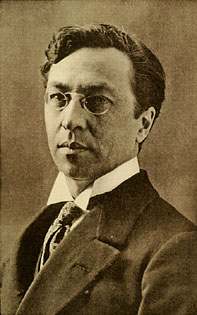Wassily Kandinsky (Wassily Kandinsky)

Russian-born Painter, Theorist. He is considered the father of abstract art. Kandinsky believed that painting should be purely a form of personal expression rather than the depiction of recognizable subjects or ideas. He compared the medium to music and referred to his works as “compositions”. The kaleidoscopic bursts of dazzling color seen in his early abstract style later gave way to elegant arrangements of geometric patterns. Among his works are “Yellow, Red, Blue”, “Improvisation 7”, “Composition VIII”, “Little Pleasures, No. 174”, and “Contrasting Sounds”. He detailed his theories in the book “On the Spiritual in Art” (1912). Wassily Wassilyevich Kandinsky was born in Moscow and studied law at the university there. At age 30 he abandoned a successful career as an attorney to pursue painting in Munich, Germany, where his most revolutionary work would be done. Impressionism and early Expressionism provided his initial influences. He created his first abstract paintings in 1910 and the following year founded the movement “Der Blaue Reiter” (“The Blue Rider”) with Franz Marc, Paul Klee and others. Kandinsky lived in Moscow from 1914 to 1921 and then returned to Germany, where he taught the theory of form at the Bauhaus school until the Nazis shut it down in 1933. He spent his last years in Paris, becoming a French citizen in 1939. His paintings and writings had a huge impact on the American Abstract Expressionist movement of the 1940s. (bio by: Bobb Edwards) Family links: Spouse: Nina Kandinsky (____ – 1983)* *Calculated relationship
Born
- December, 16, 1866
Died
- December, 12, 1944
Cemetery
- Neuilly-sur-Seine New Communal Cemetery
- France

